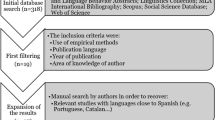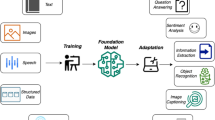Abstract
In this paper, we present the building of various language resources for a multi-engine bi-directional English-Filipino Machine Translation (MT) system. Since linguistics information on Philippine languages are available, but as of yet, the focus has been on theoretical linguistics and little is done on the computational aspects of these languages, attempts are reported here on the manual construction of these language resources such as the grammar, lexicon, morphological information, and the corpora which were literally built from almost non-existent digital forms. Due to the inherent difficulties of manual construction, we also discuss our experiments on various technologies for automatic extraction of these resources to handle the intricacies of the Filipino language, designed with the intention of using them for the MT system. To implement the different MT engines and to ensure the improvement of translation quality, other language tools (such as the morphological analyzer and generator, and the part of speech tagger) were developed.
Similar content being viewed by others
References
Alcantara, D., Hong, B. A., Perez, A., & Tan, L. (2006). Rule extraction applied in language translation—R.E.A.L. translation. BSCS Thesis.
Beesley, K., & Karttunen, L. (2000). Finite-state non-concatenative morphotactics. In J. Eisner, L. Karttunen, & A. Thériault (Eds.), Finite-state phonology: Proceedings of the 5th workshop of the ACL special interest group in computational phonology (SIGPHON), pp. 1–12.
Bonus, B. (2004). The tagalog stemming algorithm. In 1st National Natural Language Processing Research Symposium, DLSU-Manila, January 28–29, 2004.
Brill, E. (1992). A simple rule-based part of speech tagger. In Proceedings of the DARPA Speech and Natural Language Workshop, pp. 112–116.
Cheng, C., & See, S. (2006). The revised wordframe model for the Filipino language. Journal of Research for Science, Computing and Engineering (Vol 3, No.2). De la Salle University-Manila, Philippines.
Chiang, D. (2005). A hierarchical phrase-based model for statistical machine translation, [online] Available: http://www.acl.ldc.upenn.edu/P/P05/P05–1033.pdf (April 2006).
Cicekli, I., & Güvenir, H. (2001). Learning translation templates from bilingual translation examples. In M. Carl & A. Way (Eds.), Recent advances in example-based machine translation (pp. 255–286). Netherlands: Kluwer Academic Publishers.
Commission of the Filipino Language, Manila, Philippines.
De Guzman, V. (1978). Syntactic derivation of tagalog verbs. Honolulu: The University Press of Hawaii.
Dimalen, D. (2004). AutoCor: Automatic acquisition of corpora of closely-related languages. MSCS Thesis, De la Salle University-Manila, Philippines.
Fortunato, T. (1993). Mga Pangunahing Etnoling-guistikong Grupo sa Pilipinas. Malate Manila, Philippines: De La Salle University Press.
Fortes-Galvan, F., & Roxas, R. (2006). A constraint-based morphological analyzer for concatenative and non-concatenative morphology. In Proceedings of the Pacific Asia Conference on Language, Information and Computation. Wuhan, China. November 1–3, 2006.
Ghani, R., Jones, R., & Mladenic, D. (2001). Using the web to create minority language corpora. In 10th International Conference on Information and Knowledge Management (CIKM-2001), [online] Available: http://www.cs.cmu.edu/∼TextLearning/corpusbuilder/papers/cikm2001.pdf
Go, K., Morga, M., Nuñez, V., & Veto, F. (2006). TExt translation: template extraction for a bidirectional English-Filipino example-based machine translation. BSCS Thesis, De La Salle University, Philippines.
Koskenniemi, K. (1983). Two-level morphology: A general computational model for word-form recognition and production. Ph.D. Thesis, University of Helsinki.
Lim, N., Lat, J., Ng, S., Sze, K., & Yu, G. (2006). Extraction of English-Filipino lexicon from corpora. In Science and technology congress. De La Salle University-Manila, Philippines.
Marcus, M. P., Santorini, B., & Marcinkiewicz, M. A. (1993). Building a Large Annotated English Corpus: The Penn Treebank. University of Pennsylvania, Philadelphia. Available from http://www.ldc.upenn.edu/Catalog/docs/treebank2/cl93.html
Miller, G., Fellbaum, C., & Tengi, R. (1998). Wordnet: A lexical database for the English language. [online] Available: http://wordnet.princeton.edu/ (March 2006).
Pantel, P. (2003). Clustering by committee. Ph.D. Dissertation, Department of Computing Science, University of Alberta.
Probst, K. (2002). Semi-automatic learning of transfer rules for machine translation of low-density languages. [online] Available: http://www-2.cs.cmu.edu/afs/cs.cmu.edu/project/cmt-51/ltiweb/LARG/presentations/LARG-20020405-Kathrin.ppt (June 2005).
Rabo, V. (2004). TPOST: A template-based, n-gram part-of-speech tagger for tagalog. MSCS Thesis, De la Salle University-Manila, Philippines.
Rapp, R. (1999). Automatic identification of word translations from unrelated English and German corpora. In Proceedings of the 37th annual conference of the association for computational linguistics, pp. 519–525, 1999.
Santiago, A., & Tiangco, N. (1991). Makabagong Balarilang Filipino. Rex Printing Company, Quezon City, Philippines.
Tiu, E. (2004). Automatic lexicon extraction from comparable, non-parallel corpora. MSCS Thesis, De La Salle University-Manila, Philippines.
Wicentowski, R. (2002). Modeling and learning multilingual inflectional morphology in a minimally supervised framework. Johns Hopkins University, http://www.cs.swarthmore.edu/∼richardw/pubs/thesis.pdf, accessed on January, 2005.
Acknowledgments
This project is funded by the Philippine Council for Advanced Science and Technology Research and Development, Department of Science and Technology, Philippine Government. The authors would also like to thank our undergraduate and graduate thesis students who have helped us, in one way or another, towards the development of the Multi-Engine English-Filipino machine translation system and the needed language resources described in this paper.
Author information
Authors and Affiliations
Corresponding author
Rights and permissions
About this article
Cite this article
Roxas, R.E.O., Borra, A., Ko Cheng, C. et al. Building language resources for a Multi-Engine English-Filipino machine translation system. Lang Resources & Evaluation 42, 183–195 (2008). https://doi.org/10.1007/s10579-007-9037-5
Received:
Accepted:
Published:
Issue Date:
DOI: https://doi.org/10.1007/s10579-007-9037-5




